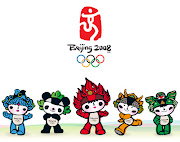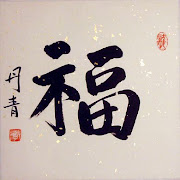Lunar New Year is also called Chinese New Year, New Spring, Spring Festival, or Spring Celebration. For any Chinese, Lunar New Year is the most important festival in the entire year. This is the season filled with joy, and the time to reunite with family and friends.
The Nian Beast
Lunar New Year originated from the interesting legend of the Nian Sou - the beast called "Nian" ("year" in Chinese). It was believed that this Nian Beast would appear on every New Year's Eve to feast on the mortals. So every year on this day, everyone from the family and the village will come back to gather round to discuss and plan on fighting the Beast, hence the reunion on the eve of Lunar New Year.
These people believed that the Beast was afraid of the colour red, fire and bright light, loud noise and explosion. Therefore torches were lit, doors were pasted with red strips of paper, firecracker was released - all these, to drive the Beast away - till the next morning, when everyone came out to congratulate (Gong Xi) each other on the victory over the Beast.
Whether the legend was true, the tradition lived on. We now still practise the reunion, the red paper strips written with words depicting good fortune, and the firecracker (although many countries have banned this activity due to the explosive used in the firecracker).
The Eve - "30th Night"
The Reunion Dinner on the New Year's Eve is the most important event where everyone in the family will be expected to be present. Most families would prepare a feast for the night. The food dishes will also have names that signify good fortune or good life. For example, fish in Chinese (Yu) shares the same sound with the word 'extra' or 'leftover'. There is a New Year phrase that says "Nian Nian You Yu" which means, "there is some (fish) leftover from the previous year, every year". Therefore the lucky fish is a lucky dish, and paintings of fish are also loved by many. We will usually keep a little leftover from the reunion dinner, just as a symbolic gesture. Another common lucky dish is Fa Cai Hao Shi which means "prosperity and good fortune". Fa Cai is a type of seaweed that looks a lot like shiny black hair, and its Chinese name sounds just like "prosperity" in Chinese; whilst Hao Shi is preserved oyster, which sounds like "good things".
An age-old practice passed down from the Nian Beast legend is Shou Sui (literally means guarding/keeping age). Traditionally, the Chinese will stay up all night from the eve till the morning of Lunar New Year. It is believed that by doing so, they could extend their parents' living years. Therefore it is quite common to see the Chinese staying up talking, drinking tea, or even playing Mahjong all night long, on the New Year's Eve.
The Little Red Envelopes - "Ya Sui Qian"
You may have seen the little red envelopes containing money, given out during Lunar New Year. Some call it Hung Bao (means red packet), some call it Ang Pao (depending on the dialect), but the original name of the money wrapped in little red envelope is Ya Sui Qian. It is given to children by their parents for good luck, and it is only given by those who are married, to those who are younger. It will usually be given to children who come to visit the family, or to the younegr frined and relatives whom we visit. Chinese are very particular about longevity of life, and they - well, we - believe that by doing so, our ageing process can be decelerated. (Ya Sui means compressing age, Qian means money) Honestly, a lot of younger Chinese nowadays, are not aware of this. The money contained in the packet has over-shone the real meaning of the gesture.
Other Activities, Practices and Taboos
Other common practices are new clothes, new hair-cut (traditionally, those who are in mourning stage are not allowed to have their hair cut), paying visits to friends and relatives to give good greetings to each other, reconciliations, etc. popular festive activities such as Lion Dance and Dragon dance are believed to have the effect of ridding evils and bad luck, and to bring harvesting rain in the coming year.
Naturally, there are taboos that we have to abide during the festive season. Any sharp, pointy objects are not to be visible, no sweeping is allowed during the first few days of the New Year - even brooms have to be hidden away - to prevent any good luck or fortune that may be swept away. Breaking anything is also a taboo. Should it unfortunately happen, we will have to quickly say something nice to accompany it, such as Sui Sui Ping An - which means "out of harm's way, all year round". "Sui" means age or year, which sounds the same as "shattered". Apart from that, any vocabulary related to unfortunate event is a big No-No. In our family, we have to even hide the eggs away.
The Lunar New Year preparation actually starts from Dong Zhi (Winter Festival), the 24th day of the 12th month on Lunar Calendar (normally falls on 21st or 22nd of December, the shortest day in a year). This day denotes the end of the cold winter, and the beginning of a new spring. In the Chinese legend, the Kitchen God (Zao Jun) will have to leave the family he was guarding, and return to report to the Lord of all Gods. To prevent the Kitchen God from bad-mouthing the family, they will make a sweet and sticky cake called Nian Gao, to offer to the Kitchen God. Nian Gao also signifies a higher achievement each year (Gao has the same sound as "high", and Nian means "year"). On this day, some Chinese will also make Tang Yuan (some have it on the 15th day of Lunar New Year) as part of the offerings. The sound of Tang Yuan is close to Tuan Yuan, which means "reuniting".
Other new year must-haves are Mandarin oranges, dried oyster, various types of melon seeds and sweets, steam cake (Fa Gao - symbolises proprerity), oil-preserved smoked duck and smoked sausages, etc. Prior to all these, some will also have La Ba Porridge on the 8th day of the month. Do check out more of our Festive Food selection.
Then it will be the spring-cleaning, that indicates sending the old and bad away, and prepare to welcome a better new year. Next will be the preparation of New Year offering and food to be served during the festive season. Some of the regular snacks and cookies in
As the New Year is approaching, most Chinese will shop at the Flower Market (Hua Shi), for some good luck plants. More popular ones are Narcissus flowers, chrysanthemum, plum blossom and peach blossom. It is believed that, if the peach blossom blooms on the 1st day of New Year, the person or the family will have good luck for the year or find love. But these plants are only found in 4-season countries so Chinese who are in warmer countries will have to settle for other alternatives.
The red strips of paper with writing on are called Dui Lian (paired sentences), which come in pairs. These sentences should be written in complimenting manner, for instance, the first sentence (Shang Lian - "upper sentence") should have the noun, verb, etc complimenting the noun, verb, etc in second sentence (Xia Lian - "lower sentence"), in the same order. These phrases often describe the mood in spring and receiving fortune and luck. People will also put up other red decorations such as the word "Fu" (luck) on the wall or the main door. Some may like to place it upside down, reason being, "upside down" in Chinese shares the same sound with "arriving". So it in a way signifies the arriving of a lucky year.
A Long and Colourful Celebration
The Lunar New Year celebration officially lasts for 15 days. The second day of the New Year is the day when all married daughters have to go back to their parents' home for a visit. They is usually accompanied by their husbands, especialy the newly weds. The 7th day is a big day called The People's Day or man's birthday (Ren Ri), which symbolises the birth of new life and new hope after the fight against the Nian Beast (disaster and bad luck). The Hokkiens also celebrate the 9th day of the New Year extensively, treating it as important as the 1st day. On the 15th day, Yuan Xiao (also widely known as Chap Goh Meh in Hokkien, which means 15th night), people will visit the lantern show. Some lanterns will also carry riddles for the viewers to guess the answers, as an entertainment.
Yuan Xiao - The Chinese Valentine's Day
The 15th day is also being referred to as the Chinese Valentine's day. On this day, many single girls will gather at the riverside upstream to toss mandarin oranges into the river, with the hope that the right single men who await downstream, will pick up the oranges. It is believed that this act will bring the person to his/her right match. So it's no surprise the mandarin oranges will sell really well on that day.
Of course, Chinese who originated from different area of
We can go on forever, really. But if you have any different practices or New Year beliefs that we do not know of, please do share it with us. Anyone from any culture who would like to tell us about your celebration, we would also love to hear from you.
Lunar New Year in this 12-Year Cycle
| Zodiac Animal |
| Lunar Year | First Day of New Year | |
|
| Rat |
| Wu Zi | February 7, 2008 |
|
| Ox |
| Ji Chou | January 26, 2009 |
|
| Tiger |
| Gen Yin | February 14, 2010 |
|
| Rabbit |
| Xin Mou | February 3, 2011 |
|
| Dragon |
| Ren Chen | January 23, 2012 |
|
| Snake |
| Gui Si | February 10, 2013 |
|
| Horse |
| Jia Wu | January 31, 2014 |
|
| Goat |
| Yi Wei | February 19, 2015 |
|
| Monkey |
| Bing Shen | February 8, 2016 |
|
| Rooster |
| Ding You | January 28, 2017 |
|
| Dog |
| Wu Xu | February 16, 2018 |
|
| Boar |
| Ji Hai | February 5, 2019 |
Reference : www.knowingfood.com




